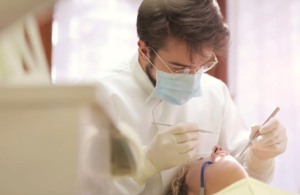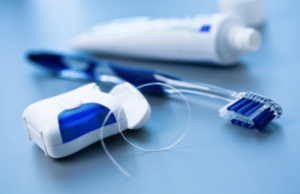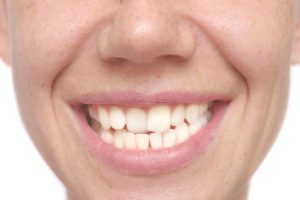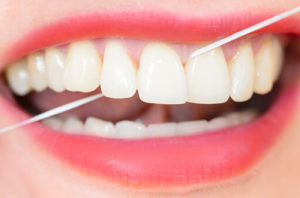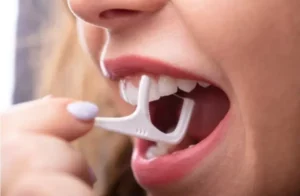A root canal might sound scary, but it’s a common dental procedure that can save a tooth that is badly damaged or infected. One of the biggest concerns people have is whether they will be put to sleep during the procedure. Let’s break down what happens during a root canal and answer some of the most common questions.
Do You Get Put to Sleep During a Root Canal?
Generally, dentists do not put you to sleep for a root canal. Instead, they use local anesthesia to numb the area around the affected tooth. This means you will be awake and aware during the procedure, but you won’t feel any pain in the area being treated. Local anesthesia is very effective at making sure you stay comfortable.
Will the Dentist Put Me to Sleep If I Ask?
If you are extremely anxious or scared about the root canal, talk to your dentist about your concerns. While it’s uncommon to be put to sleep, some dentists offer sedation options to help you relax. These options can include:
- Nitrous Oxide (Laughing Gas): This is a mild sedative that helps you feel calm. It wears off quickly after the procedure.
- Oral Sedation: This involves taking a pill before the procedure to help you relax. You will still be awake but feel more at ease.
- IV Sedation: This is a stronger form of sedation administered through an IV. It makes you very relaxed and somewhat drowsy, but you are not completely unconscious.
If you strongly prefer to be asleep, you might need to see a specialist called an oral surgeon, who can provide general anesthesia. However, this is usually reserved for more complex procedures.
How Long Does a Root Canal Take?

The length of a root canal procedure can vary depending on the complexity of the case and which tooth is being treated. On average, a root canal takes about 60 to 90 minutes. Here’s a general timeline of what happens during the procedure:
- Preparation: The dentist will take X-rays to see the shape of the root canals and check for any signs of infection in the surrounding bone. Then, they will numb the area around the tooth with local anesthesia.
- Accessing the Tooth: The dentist will place a rubber dam around the tooth to keep it dry and free of saliva. Then, they will make an opening in the crown of the tooth to access the pulp chamber.
- Cleaning and Shaping: The dentist will remove the infected or damaged pulp from inside the tooth and clean the root canals. They will also shape the canals to prepare them for filling.
- Filling the Canals: Once the canals are cleaned and shaped, the dentist will fill them with a rubber-like material called gutta-percha. This helps seal the canals and prevent future infection.
- Sealing the Tooth: After filling the canals, the dentist will place a temporary or permanent filling in the opening. In many cases, a crown will be placed on the tooth at a later appointment to provide additional strength and protection.
How Painful Is a Root Canal?
Many people worry about the pain of a root canal, but the truth is that modern root canals are not much more uncomfortable than getting a regular filling. The local anesthesia used during the procedure numbs the area effectively, so you shouldn’t feel any pain while the dentist is working on your tooth.
You might feel some pressure or slight discomfort as the dentist cleans and shapes the canals, but it should not be painful. If you do feel any pain during the procedure, let your dentist know immediately so they can adjust the anesthesia.
After the procedure, it’s normal to experience some soreness or mild discomfort for a few days. This can usually be managed with over-the-counter pain relievers like ibuprofen or acetaminophen. Your dentist may also prescribe medication if needed.
What to Expect After a Root Canal
After your root canal, there are a few things you can do to ensure a smooth recovery:
- Follow Your Dentist’s Instructions: Your dentist will give you specific instructions on how to care for your tooth after the procedure. Make sure to follow these instructions carefully.
- Take Pain Relievers as Needed: Over-the-counter pain relievers can help manage any discomfort you experience after the anesthesia wears off.
- Avoid Hard or Chewy Foods: Stick to soft foods for a few days to avoid putting too much pressure on the treated tooth.
- Maintain Good Oral Hygiene: Continue to brush and floss regularly, but be gentle around the treated area until it has fully healed.
Why Root Canals Are Important
A root canal is necessary when the pulp inside your tooth becomes infected or damaged. This can happen due to deep decay, a crack or chip in the tooth, or trauma to the tooth. If left untreated, an infected tooth can cause severe pain, abscesses, and even tooth loss.

By removing the infected pulp and sealing the tooth, a root canal can save your tooth and prevent further problems. It allows you to keep your natural tooth instead of having it extracted and replaced with an artificial tooth.
Final Thoughts
While the idea of a root canal can be intimidating, understanding the process and knowing what to expect can help ease your fears. Most people do not need to be put to sleep for a root canal, as local anesthesia is very effective at numbing the area and preventing pain. If you are extremely anxious, talk to your dentist about sedation options.
A root canal typically takes about 60 to 90 minutes and is no more painful than getting a regular filling. After the procedure, you might experience some soreness, but it can usually be managed with over-the-counter pain relievers.
Remember, a root canal is an important procedure that can save your tooth and prevent more serious dental issues. If your dentist recommends a root canal, it’s because they want to help you maintain a healthy, pain-free smile.


